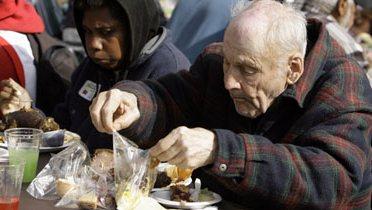Cities and suburbs occupy well-defined roles within the discussion of poverty, opportunity, and social welfare policy in metropolitan America. Research exploring issues of poverty typically has focused on central-city neighborhoods, where poverty and joblessness have been most concentrated. As a result, place-based U.S. antipoverty policies focus primarily on ameliorating concentrated poverty in inner-city (and, in some cases, rural) areas. Suburbs, by contrast, are seen as destinations of opportunity for quality schools, safe neighborhoods, or good jobs.
Several recent trends have begun to upset this familiar urban-suburban narrative about poverty and opportunity in metropolitan America. In 1999, large U.S. cities and their suburbs had roughly equal numbers of poor residents, but by 2008 the number of suburban poor exceeded the poor in central cities by 1.5 million. Although poverty rates remain higher in central cities than in suburbs (18.2 percent versus 9.5 percent in 2008), poverty rates have increased at a quicker pace in suburban areas.
Watch video of co-author Scott Allard explaining the report’s findings » (video courtesy of the University of Chicago)
This report examines data from the Census Bureau and the Internal Revenue Service (IRS), along with in-depth interviews and a new survey of social services providers in suburban communities surrounding Chicago, IL; Los Angeles, CA; and Washington, D.C. to assess the challenges that rising suburban poverty poses for local safety nets and community-based organizations. It finds that:
Suburban jurisdictions outside of Chicago, Los Angeles, and Washington, D.C. vary significantly in their levels of poverty, recent poverty trends, and racial/ethnic profiles, both among and within these metro areas. Several suburban counties outside of Chicago experienced more than 40 percent increases of poor residents from 2000 to 2008, as did portions of counties in suburban Maryland and northern Virginia. Yet poverty rates declined for suburban counties in metropolitan Los Angeles. While several suburban Los Angeles municipalities are majority Hispanic and a handful of Chicago suburbs have sizeable Hispanic populations, many Washington, D.C. suburbs have substantial black and Asian populations as well.
Suburban safety nets rely on relatively few social services organizations, and tend to stretch operations across much larger service delivery areas than their urban counterparts. Thirty-four percent of nonprofits surveyed reported operating in more than one suburban county, and 60 percent offered services in more than one suburban municipality. The size and capacity of the nonprofit social service sector varies widely across suburbs, with 357 poor residents per nonprofit provider in Montgomery County, MD, to 1,627 in Riverside County, CA. Place of residence may greatly affect one’s access to certain types of help.
In the wake of the Great Recession, demand is up significantly for the typical suburban provider, and almost three-quarters (73 percent) of suburban nonprofits are seeing more clients with no previous connection to safety net programs. Needs have changed as well, with nearly 80 percent of suburban nonprofits surveyed seeing families with food needs more often than one year prior, and nearly 60 percent reporting more frequent requests for help with mortgage or rent payments.
Almost half of suburban nonprofits surveyed (47 percent) reported a loss in a key revenue source last year, with more funding cuts anticipated in the year to come. Due in large part to this bleak fiscal situation, more than one in five suburban nonprofits has reduced services available since the start of the recession and one in seven has actively cut caseloads. Nearly 30 percent of nonprofits have laid off full-time and part-time staff as a result of lost program grants or to reduce operating costs.
The Brookings Institution is committed to quality, independence, and impact.
We are supported by a diverse array of funders. In line with our values and policies, each Brookings publication represents the sole views of its author(s).


